Here’s a short video that perhaps captures the mystery of the world of Aia, which is the setting for the Bitterbynde Trilogy. It was originally made as a trailer for the audiobook of The Ill-Made Mute. I hope you enjoy it.
Tag Archives: inspirations
The Northern Threat
Border reivers.
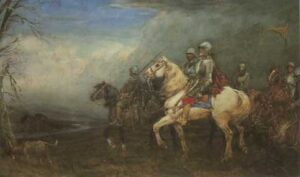
I was rereading one of my own books the other day, (because it’s being made into an audio-book – hurrah!), and I was reminded of the concept of “dangerous northern dwellers, who are always threatening to surge down south and cause mayhem”.
I started writing THE ILL-MADE MUTE twelve years before it was published, because it took me four years to write each book of the BITTERBYNDE trilogy. In other words, I started around the year 1988. By that stage of my life, the concept of perilous northern raiders was ingrained into my psyche. Which is how they got written into the book.
This is because I was raised on a diet of books that included a great deal of British history, such as the wonderful books of Rosemary Sutcliff and Andre Norton. And throughout British history runs a theme of Dark Forces in the North, threatening the more civilised forces in the south.
Even Mrs Gaskell’s classic NORTH AND SOUTH hints at this. In it, Northerners are typically “hard”, and live in a hellish landscape, while Southerners are soft and live amongst gardens. When I started writing my trilogy it seemed natural to me to invent a world in which trouble was brewing at the northern end. The idea of a wall between north and south also seemed somehow natural, and rather exciting. I’m guessing that’s due to the ghost of Hadrian’s Wall haunting my mind, when I was a child.
Throughout much of British history, there have been border reivers. They were raiders and outlaws along the Anglo-Scottish border from the 13th to the 16th century, who took advantage of a fraught and explosive border region over those centuries. Their feats have blended into folklore. “There were reiver families and clans on both sides of the border – the English reivers would raid into Scotland and vice versa.” [Wikipedia]
Probably, many of the books I read as a child were written by southerners who might have had a biased impression of the northerners, which is why I ended up with that impression.
Incongruously, my reading left Young Me with the impression that “north is cold”. “Cold north wind” is a phrase that sounds right to my ears, despite the fact that where I live, the north wind in summer comes roaring with the breath of a furnace.
Combined with the Christmas cards of my childhood, that depicted snow and robins, this made for mentally living in two worlds simultaneously. Which is, surprisingly, a boon for a writer.
Inspirations for “The Churchyard Yarrow” & “Madigan’s Leap”
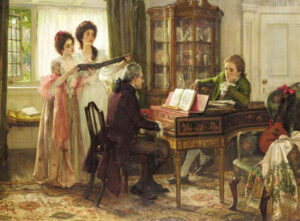
The inspiration for writing Madigan’s Leap in the first place was British and Irish folk music. I have always loved the lyrics and melodies of folk songs, and grew up listening to the music of, amongst others, Steeleye Span and Fairport Convention. The fascinating—and to me, unusual—lyrics of many of these songs taught me much about history.
In particular I found the horrific stories of press gangs in the 18th and early 19th century quite compelling. I felt driven to write a story about this onerous practice and the effect it must have had on young men, and indeed on entire families in that time and place.
Thus, thanks to music, I found myself writing about the last decade of the 19th century and the first few years of the 19th—in other words, the Regency era and the Napoleonic era.
Wikipedia says “The Regency era of British history is commonly applied to the years between c. 1795 and 1837, although the official regency for which it is named only spanned the years 1811 to 1820.”
“Madigan’s Leap” is set in an alternative version of Ireland during this era. It incorporates many aspects of the social, political and geographical elements of Ireland at that time, but I am a fantasy writer, after all, so this is a fantasy tale, and it bends many of the facts to suit the story.
I did my best, nonetheless, to clothe the characters in some of the (hopefully) historically accurate and exquisite costumes of that time. Most people agree, it was a time of exceptionally stylish attire for the military and for the wealthy. Isn’t that one of the many reasons we all love the novels of Jane Austen? 🙂 It is also said that “The uniforms of the Napoleonic Wars were some of the most elaborate and dashing in military history.”
The Churchyard Yarrow

Compliments of the Season!
As mentioned in my last post, Ford Street Publishing is producing a fantasy anthology in March 2024, and my story “The Churchyard Yarrow” is included. The book’s title is “Borderlands: Tales from the Edge — a new anthology.”
Let me tell you something about the background of my short story. It’s an excerpt from a work I’ve recently finished writing. The novel’s title is THE KING’S SHILLING, and it is Book #1 in a new trilogy called MADIGAN’S LEAP.
I began this work some while ago, and it was originally intended to be a short story.
I set it aside for what I thought was a year or two, but when I eventually looked at it again this year, my word processing software informed me that I had typed the first word in 2008. Even back then, the short story was taking on larger dimensions, because I had got as far as the middle of what is now Book #2 before setting it aside.
I recommenced the project, accepted the inevitable reality that it was expanding into three volumes, and completed the trilogy.
Yarrow

Achillea millefolium is commonly known as yarrow. Other common names include old man’s pepper, devil’s nettle, sanguinary, milfoil, soldier’s woundwort, and thousand seal.
You know that when a plant has many common names, it’s one that people find useful.
From Wikipedia: “In antiquity, the plant was known as herba militaris for its use in stanching the flow of blood from wounds. Other names implying its historical use in healing—particularly in the military—include bloodwort, knight’s milfoil, staunchweed, and, from its use in the United States Civil War, soldier’s woundwort.” [Wikipedia: Achillea millefolium]
It’s the “magical” uses of plants that also interests me. Historically, in Ireland, on May Day or the night before, women would place a stocking full of yarrow under their pillow before they went to sleep and recite:
Good morrow, good yarrow, good morrow to thee,
I hope by the yarrow my lover to see;
And that he may be married to me.
The colour of his hair and the clothes he does wear,
And if he be for me may his face be turned to me,
And if he be not, dark and surely may he be,
And his back be turned toward me.[Britten, James (1878). Folk-Lore Record. Vol. 1. Folklore Enterprises, Ltd., Taylor & Francis.]
Tanith Lee’s Nieces
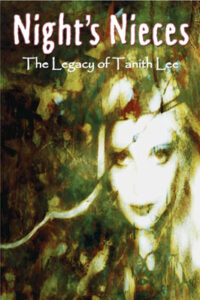
I have four works in this beautiful anthology, including poems and short stories. Here’s the blurb:
In the footsteps of the High Priestess of Fantasy… Tanith Lee – 1947-2015 – was a huge influence on fantasy literature, and a towering inspiration to a generation of writers, who were captivated by her iconic, poetic prose, her deft use of language, her surreal visions and her ground-breaking ideas.
Many successful authors claim that discovering the work of Tanith Lee encouraged them to write in the first place. In particular, she was instrumental in giving women writers the confidence to break the staid moulds of the genre – to be evocative, sensual and daring in their work, to smash boundaries.
Its title inspired by Tanith’s Flat Earth sequence of books, (in particular Night’s Master), Night’s Nieces is a collection of stories by female writers, who not only counted Tanith Lee as a close friend, but also as a mentor, a teacher and an inspiration. Tanith, having no children herself, considered these younger women to be her ‘nieces’ and offered her support to their writing. While the ‘nieces’ included in this book do not encompass all of Tanith’s close writer friends – for she had many – it amply provides a sample of her legacy.
Each ‘niece’ has written a short story inspired by Tanith’s work, as well as an accompanying article describing how Tanith influenced her career and sharing fond memories of her friendship. The book also includes previously unpublished photographs from Tanith’s life, as well as artwork by the authors.
Contributors include Storm Constantine, Cecilia Dart-Thornton, Vera Nazarian, Sarah Singleton, Kari Sperring, Sam Stone, Freda Warrington and Liz Williams. With an introduction by John Kaiine.
In praise of a simple writing tool
Recently I read somewhere that “NASA spent millions to develop a pen that would write in space, whereas the Soviet cosmonauts used a pencil.” This turns out to be a myth, but it got me thinking about pencils – in particular pencils with a graphite core (commonly known as “lead pencils” (despite the fact there’s no lead in them).
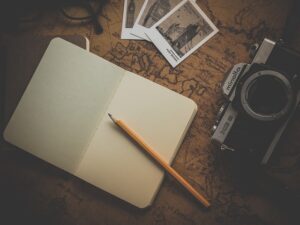
In the trenches of The Somme during the First World War, my great-uncle wrote letters to his loved ones at home using a pencil. To this day, those poignant missives can still be easily read. This indicates that pencils have archival qualities. Presumably he simply sharpened the pencils with a pocket-knife whenever they wore down.
The Reidinger website lists the benefits of pencils:
- pencils are cheap writing utensils.
- there are various hardness degrees for different areas of use.
- you can get pencils nearly everywhere.
- different types and designs are available.
- pencils are easy to handle.
- they write perfectly at any temperature.
- they write in any position or situation (overhead or in space!)
- Made a mistake? No problem – simply erase the wrong parts
- words written with a pencils have a high resistance to light
- a writing length up to 50,000 metres!
- the sound of writing on paper, and the sound of the pencil sharpener that sharpens a blunt pencil
Wikipedia’s article on pencils says, “Pencils create marks by physical abrasion, leaving a trail of solid core material that adheres to a sheet of paper or other surface. They are distinct from pens, which dispense liquid or gel ink onto the marked surface.
“Most pencil cores are made of graphite powder mixed with a clay binder. Graphite pencils (traditionally known as “lead pencils”) produce grey or black marks that are easily erased, but otherwise resistant to moisture, most chemicals, ultraviolet radiation and natural aging. “
I like to carry paper and a writing utensil with me wherever I go, in case inspiration strikes. I’ve given up carrying ballpoint pens. They seem to inconveniently dry up with no explanation. Pencils are more reliable, (unless you drop them and the internal core fractures in a million places along its length, prior to falling out in small, annoying fragments).
Metal Pens
These days, we can buy “metal pens”. Wired’s article Neither Pen Nor Pencil: Write Endlessly In Metal explains the principle: ” A tiny amount of metal alloy transfers from the pen to the page. Unlike pencil, it can’t be smudged with your hand, and unlike ink, it doesn’t need to dry. The amount of alloy for each stroke is so tiny that the pens are expected to last a lifetime without needing to be refilled or replaced. You can sharpen the tips for a finer point with a little sandpaper.”
The disadvantages? The alloy in some of these pens contains trace amounts of lead, so it’s not so good for kids, and the thought of lead in my writing is disconcerting.
Metal pens sound ultra-modern, but in fact they were invented hundreds of years ago. The National Galleries of Scotland website explains that they were used in the Middle Ages:
“Metalpoint is a traditional drawing technique in which a thin metal stylus, usually of silver, is used with paper that has been prepared with an abrasive coating traditionally made from powdered bone and gum-water. As the point is drawn along the surface, tiny traces of metal are left behind creating a delicate and very precise line.”
Artists such as Leonardo da Vinci, Dürer and Rembrandt all used metal styluses made of lead, tin or silver. The technique is called Silverpoint when the stylus is made of silver, and this was the most favoured metal.
The pencil I’m using right now
I’m currently using a Columbia Copperplate HB pencil to write down ideas. It’s also useful for drawing visual representations of your concepts, and even shading your pictures for a 3D effect.
How pencils are made
Finally, if you’re into watching videos on YouTube, try this one. It’s by Faber-Castell, and it’s called “How We Make Pencils”.
WRITING TIP #4: Read only the best.
Read only the Best
 This, for me, is an essential writing tip!
This, for me, is an essential writing tip!
Zat Rana wrote, in an article for QUARTZ, published on 18 October, 2017:
QUALITY OVER QUANTITY: You “become” what you read.
“. . . I don’t think most of us internalize quite how much, and sometimes how subtly, what we read determines who we become.
“Input shapes your output.
“Language is our primary tool of communication. It’s how we build and organize our knowledge, and it’s what allows us to interact with each other.
“Outside of direct experience, it’s also largely how we create our perception of reality. The information your senses absorb through your surroundings combine to create linguistic (and subconscious) models in your mind about how the world works and the best way to interact with it.
“One part of this occurs through verbal conversation, or listening to something in general, but for most knowledge workers and for the average person in developed countries a larger part of it is directly a result of what we consume [via reading].
You are what you read. The information that you input into your mind informs your thinking patterns, and it influences your output in the form of the decisions you make, the work you produce, and the interactions you have.

“That’s a huge incentive to prioritize a block of time to think about what and how you consume [read], and whether or not you read adequately relative to the progress you want to make. It’s a reason to maybe pause and consider if you can do anything to purposefully shape the direction of your mind.
“Naturally, input doesn’t necessarily mean quantity. The correlation between how much you read or consume and what you can do or who you become begins to even off after a certain point, and more isn’t always better.
“This is entirely about what the quality of your predominant sources of input [books] are, and the importance of those can’t be overstated.”

Professor JRR Tolkien
Which authors have influenced my own writing over my lifetime?
Primarily, Professor JRR Tolkien and Tanith Lee, but also (in no particular order) –
Nicholas Stuart Gray, George MacDonald, John Keats,
William Shakespeare, Isaac Asimov, Eleanor Farjeon,
C.S. Lewis, Arthur C. Clarke, E. Nesbit,
Andre Norton, Ann McCaffrey, Charles Dickens,
George Eliot, Terry Pratchett, Jane Austen,
Ray Bradbury, Susannah Clark, Thomas Hardy,
Simon Winchester, Dianna Wynne-Jones, Douglas Adams,
Alan Garner, CS Lewis, Andrew Lang,
William Allingham, Hilda Lewis, Charles Kingsley,
Emily Brontë, Juliet Marillier, William Morris,
Ursula LeGuin, Jackie French, Walter de la Mare, and more.
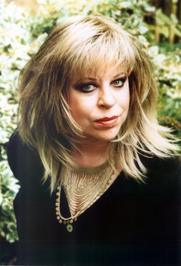
Tanith Lee
All these writers and poets have strongly influenced my inner worlds and contributed, in their own way. to the creation of the Bitterbynde Trilogy. In addition to giving me inspiration, they have also given me joy, peace, excitement, wonderment and delight. They have increased my vocabulary and helped me to look at the world in new ways.

 This, for me, is an essential writing tip!
This, for me, is an essential writing tip!